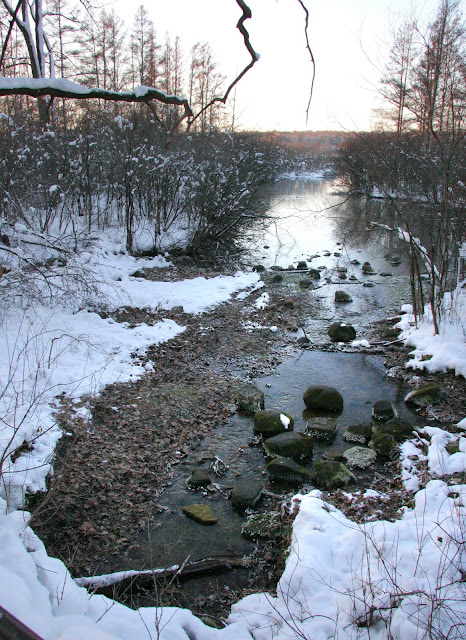Recently, I opened the beautiful booklet put together by the Friends of Lake Wingra, about that lake. There were some colorful maps showing the watershed of Lake Wingra. I was fascinated to notice that the watershed for the surface runoff is a little different from the watershed for the groundwater.
The water from rain gardens in much of Sunset Village trickles to Lake Wingra. But the surface runoff from only a corner of Sunset Village drains to Lake Wingra. Instead, most of the surface runoff goes to Lake Mendota. So your rain garden helps two lakes--it keeps dirty runoff out of Mendota, and replenishes springs that feed Wingra.
"Wingra's springs are a precious natural feature that can be viewed and enjoyed by the entire community. Cool, clear water bubbling up from the ground enchants youngsters and instills a sense of wonder for the natural world. On a hot summer day, a few minutes rest beside a cool spring can calm and rejuvenate us.
Spring water entering the lake year-round improves water quality and provides a unique habitat for many plants and animals. In winter, wildfowl flock to the open water and animals come to drink.
Groundwater makes up about a third of Lake Wingra's source-water," and helps keep Wingra Creek flowing.*
But because urbanization causes water to run into storm sewers rather than sinking into the ground, the flow of springs around Lake Wingra has declined. The map below shows the location of active springs that ring the lake.
The red dots show locations of active springs.
Because groundwater is the same cool temperature year-round, the air around the springs is delightfully cool in summer, while in deepest winter, the spring sustains a patch of green.
Big Spring, on the south shore, is so large it forms a creek you can navigate in a canoe. If you go there early on a summer morning with a picnic breakfast, the mist hangs over the creek. As you enter the mouth of the creek, it's as if you are stepping into a cooler.
In winter, the beaver like to swim in the water of the creek that always remains open. They will emerge and travel on the ice along the shore of Lake Wingra, alternately running and then tobogganing on their bellies.
The unseen world
While these springs are spectacular for themselves, they are more--the sole evidence to someone out for a walk of the unseen biosphere beneath our feet. It's a paradox--we stand on solid ground, and yet it's the surface of an ocean as well.
The trickling, percolating waters down there are alive. Coating the surface of every grain of sand and gravel is a film of bacteria that purifies the contaminants urban stormwater. Probably most of the top mile of rock that girds this planet is actually alive with bacteria. Some of them metabolize so slowly they would seem to be in suspended animation. Individual bacteria could be thousands of years old--and maybe much older.
The only other evidence is the water that comes from your tap, pumped by the city from the same mysterious world beneath our feet. It's a commons--a resource for all. Nurture your commons.
Spring on the NW shore near Arbor Drive.
Spring just S of the one above--it's twin.
The green is mostly watercress. Peppery flavor, makes good soup!
Spring just S of Big Spring
Big Spring, seen from the trail in Gallistel Woods
















No comments:
Post a Comment
Please feel free to comment on the article above, or on other watershed issues.